Find out what all the buzz is about. Backyard bug hotels provide a safe place for insects to rest weary wings, shelter or nest.
Our editors and experts handpick every product we feature. We may earn a commission from your purchases.Learn more.
Find out what all the buzz is about. Backyard bug hotels provide a safe place for insects to rest weary wings, shelter or nest.
Our editors and experts handpick every product we feature. We may earn a commission from your purchases.Learn more.
 via plowhearth.com
via plowhearth.com
Constructed in the U.S. of rot- and pest-free cypress wood siding, with a solid copper-trimmed hipped roof and adornments, the Flutterbye butterfly house is a piece of garden art. Fluttering winged wonders enter through slats on the front where they can nest safely inside, away from dangerous predators. This hotel comes with a 30-inch mounting stake and a copper-covered clean out. One five-star reviewer wrote, “Solid construction and very pretty. I staked it into a walkway garden that I had planted butterfly-attracting plants in.”
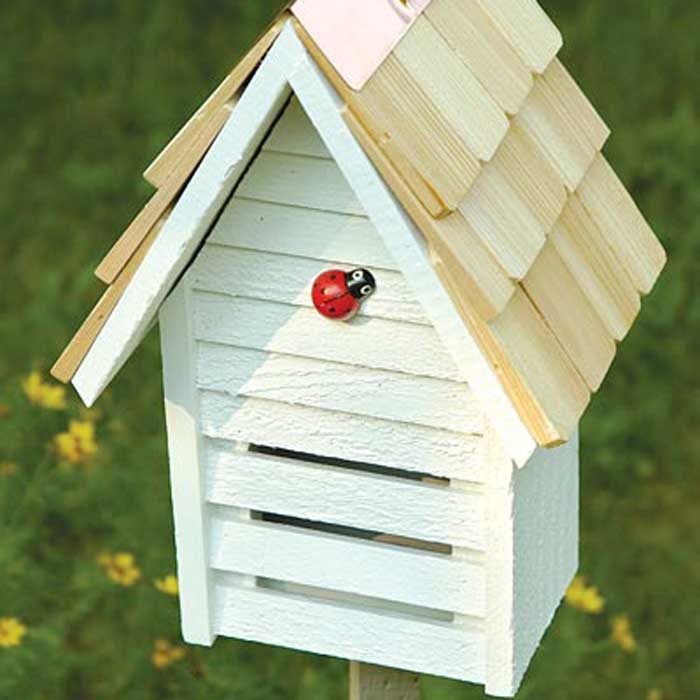 via bestnest.com
via bestnest.com
The Heartwood lady bug house features horizontal slats that create large entry and exit ways. The roof lifts off for easy cleaning and observation and you can place the house on a deck or other flat surface, or use the included mounting pole. Providing a place for ladybugs is important because they eat unwanted aphids, mealy bugs and scale insects. Make sure you know about these house bugs and how to get rid of them, too.
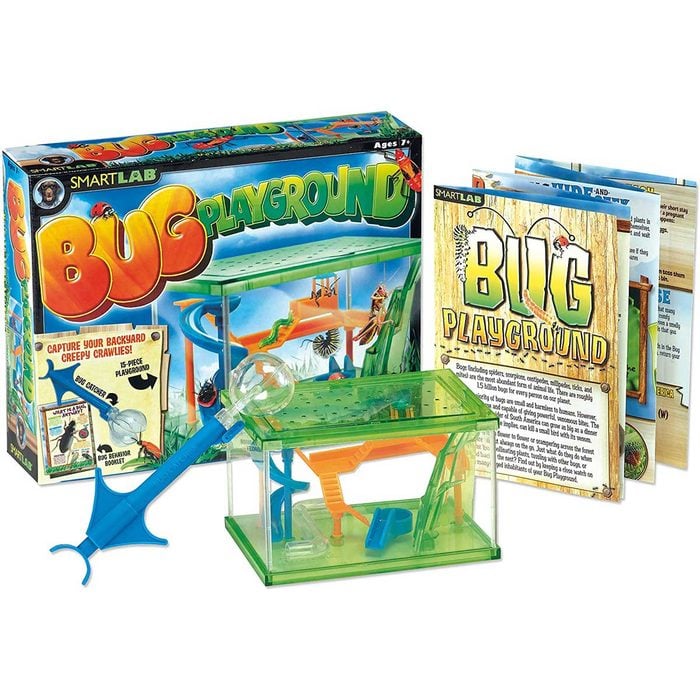 via amazon.com
via amazon.com
Watch your children learn about nature’s biodiversity first hand—the 15-piece SmartLab Bug Playground is an educational STEM toy focused on entomology. Send the kids outside where they can observe and study the behavior of ants, beetles and crickets as these bugs romp around in a mini pool, tube, slide, climbing wall and jungle gym. The kit is easy to assemble and includes a bug catcher, base, lidded top, short side walls, long side walls and activity booklet.
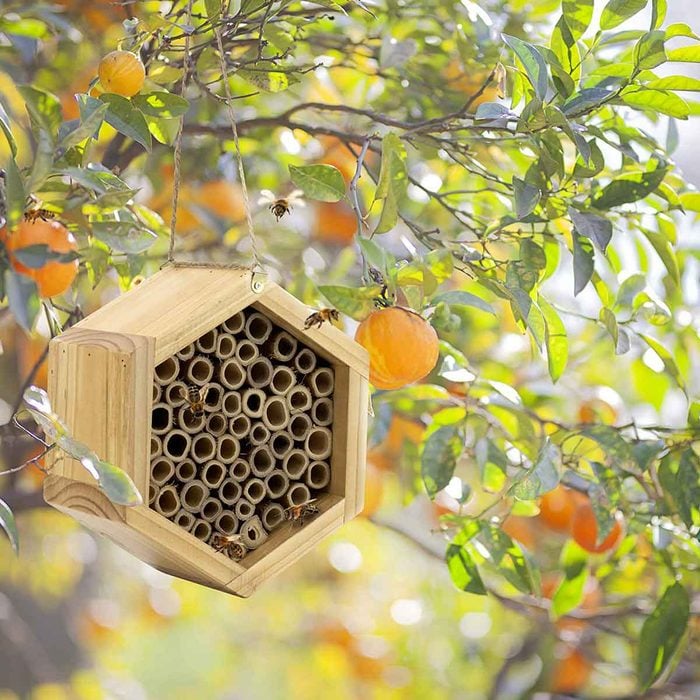 via amazon.com
via amazon.com
The Kibaga mason bee house is made of bamboo and small enough to hang anywhere. It provides a safe and sustainable environment for non-swarming (solitary) mason bees (AKA orchard bees). To encourage these pollinators, the octagon-shaped exterior surrounds 60 bamboo nesting tubes where bees can feel safe. Hang the house from the included rope in a sunny, dry area.
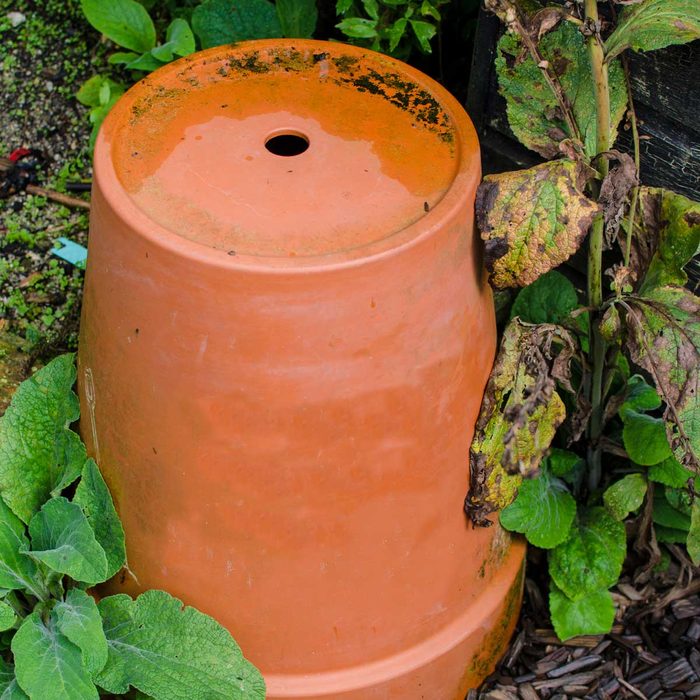 gldburger/Getty Images
gldburger/Getty Images
Do your part to save bumblebees by providing these fuzzy pollinators with somewhere to nest. To attract wayward bumblebees to your garden, the Bumblebee Conservation Trust offers a free downloadable guide with step-by-step instructions on how to create a suitable site for the queen bee to lay her eggs. You can easily fashion this bee hotel out of an extra terra–cotta pot and a few other simple materials. Place your DIY hotel near bee-friendly flowers and plants for a greater chance of success.
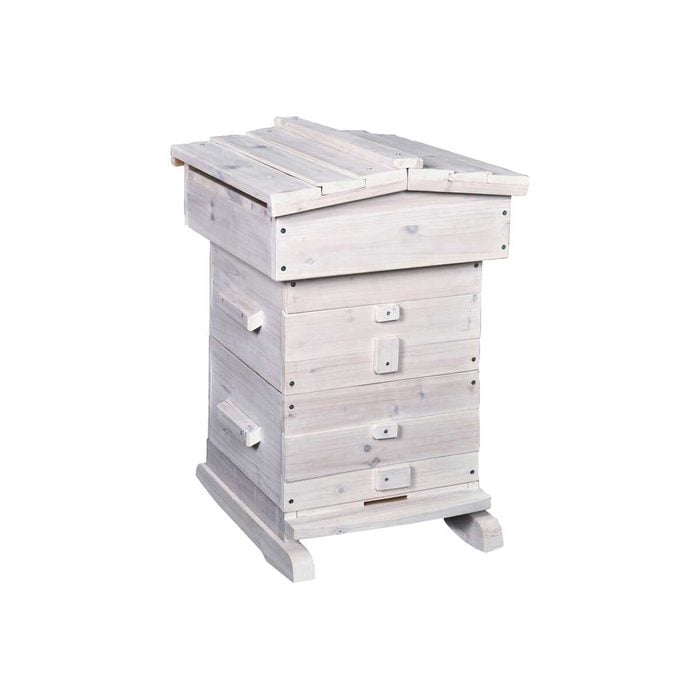 via wayfair.com
via wayfair.com
Ideal for beginning beekeepers, the Home Harvest Hive is designed for housing and raising bees naturally. The hive’s roof is peaked to shed water and ventilated to control airflow. It is painted white with a water-resistant finish, and it comes with two medium frames, but can accommodate up to 16 (sold separately). It also includes two hive boxes, two viewing windows, 18 top bars, an insulated quilt box, a screened-in base and support legs. And, it’s easy to assemble and easy to use! Happy shopper Jessica wrote, “Everything I expected! Super easy to assemble. Used a drill and it was together in 30 minutes.”
Think about where you plan to place your bug hotel. “If possible, choose a site protected from strong winds and rain in a partially sunny spot. Morning sun with afternoon shade provides warmth for insects to begin activity early in the day while offering protection from the sun during the hottest part of the day,” says Phillips.
Also check to ensure the bug hotel comes with all necessary mounting materials. According to Phillips, “You can mount your bug hotel on a wall, hang it from a tree branch or place it on a stand that is protected from direct exposure to the elements.”
Decide what type of bug you’re looking to attract. “Offering a selection of habitat types within your bug hotel can attract a larger diversity of species,” notes Phillips. Small leaf piles, pithy stems and other natural items provide a variety of sheltering spaces for insects, she says. On the other hand, she adds, “our native ladybugs prefer to overwinter in small twig piles; while solitary bees will lay their eggs in holes in wood and stems.”
I cover many topics for Family Handyman and pests is one of my beats. I’m an expert when it comes to reviewing products. I know how to gather new items that the FHM audience will love, taking into account price, durability and customer reviews. My work has appeared in The Telegraph, Fodor’s, Italy Magazine, DK Eyewitness travel guides and others.
For this article we also interviewed Mary Phillips, the head of the National Wildlife Federation’s Garden for Wildlife program and Certified Wildlife Habitat. Phillips ensures all habitat programs and resources are rooted in sustainable practices and the latest science. Since she started at the Federation in 2014, the Certified Wildlife Habitat program has grown by 64%.
When selecting the best bug hotels, we began by researching a wide range of options available on the market, considering factors such as size, material, design and price point. We also looked for bug hotels that catered to specific insect species, including bees, ladybugs, lacewings and ground beetles, ensuring a diverse selection that could accommodate various beneficial insects. To narrow down our choices, we analyzed customer reviews to understand the real-world performance and durability of each bug hotel. Finally, we selected bug hotels that offered a balance of quality, functionality and value, ensuring that there was an option suitable for every garden and budget.